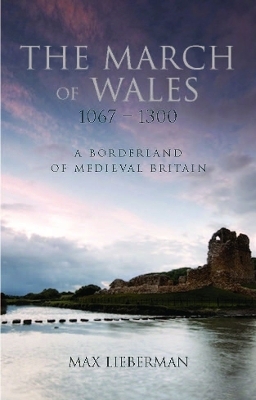
The March of Wales, 1067-1300
A Borderland of Medieval Britain
Seiten
2008
University of Wales Press (Verlag)
978-0-7083-2116-4 (ISBN)
University of Wales Press (Verlag)
978-0-7083-2116-4 (ISBN)
- Titel erscheint in neuer Auflage
- Artikel merken
By 1300, a Marcher region had been created between England and Wales, consisting of about forty castle-centered lordships extending along the Anglo-Welsh border and also across southern Wales. The March of Wales thus formed a highly distinctive part of the political geography of Britain for much of the Middle Ages.
By 1300, a region often referred to as the March of Wales had been created between England and the Principality of Wales. This March consisted of some forty castle-centred lordships extending along the Anglo-Welsh border and also across southern Wales. It took shape over more than two centuries, between the Norman conquest of England (1066) and the English conquest of Wales (1283), and is mentioned in Magna Carta (1215). It was a highly distinctive part of the political geography of Britain for much of the Middle Ages, yet the medieval March has long vanished, and today expressions like 'the marches' are used rather vaguely to refer to the Welsh Borders.
What was the medieval March of Wales? How and why was it created? The March of Wales, 1067-1300: A Borderland of Medieval Britain provides comprehensible and concise answers to such questions. With the aid of maps, a list of key dates and source material such as the writings of Gerald of Wales (c.1146-1223), this book also places the March in the context of current academic debates on the frontiers, peoples and countries of the medieval British Isles.
By 1300, a region often referred to as the March of Wales had been created between England and the Principality of Wales. This March consisted of some forty castle-centred lordships extending along the Anglo-Welsh border and also across southern Wales. It took shape over more than two centuries, between the Norman conquest of England (1066) and the English conquest of Wales (1283), and is mentioned in Magna Carta (1215). It was a highly distinctive part of the political geography of Britain for much of the Middle Ages, yet the medieval March has long vanished, and today expressions like 'the marches' are used rather vaguely to refer to the Welsh Borders.
What was the medieval March of Wales? How and why was it created? The March of Wales, 1067-1300: A Borderland of Medieval Britain provides comprehensible and concise answers to such questions. With the aid of maps, a list of key dates and source material such as the writings of Gerald of Wales (c.1146-1223), this book also places the March in the context of current academic debates on the frontiers, peoples and countries of the medieval British Isles.
Dr Max Lieberman is Research Fellow at Wolfson College, University of Cambridge.
| Zusatzinfo | Not illustrated |
|---|---|
| Verlagsort | Wales |
| Sprache | englisch |
| Maße | 138 x 216 mm |
| Gewicht | 431 g |
| Themenwelt | Geschichte ► Allgemeine Geschichte ► Mittelalter |
| Geisteswissenschaften ► Geschichte ► Regional- / Ländergeschichte | |
| ISBN-10 | 0-7083-2116-X / 070832116X |
| ISBN-13 | 978-0-7083-2116-4 / 9780708321164 |
| Zustand | Neuware |
| Haben Sie eine Frage zum Produkt? |
Mehr entdecken
aus dem Bereich
aus dem Bereich
eine neue Geschichte des Mittelalters
Buch | Hardcover (2023)
C.H.Beck (Verlag)
CHF 53,20


